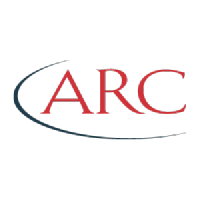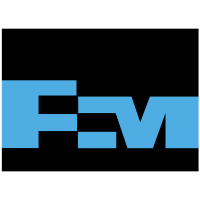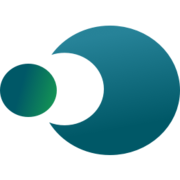
ARC Resources Ltd
TSX:ARX


| US |

|
Johnson & Johnson
NYSE:JNJ
|
Pharmaceuticals
|
| US |

|
Berkshire Hathaway Inc
NYSE:BRK.A
|
Financial Services
|
| US |

|
Bank of America Corp
NYSE:BAC
|
Banking
|
| US |

|
Mastercard Inc
NYSE:MA
|
Technology
|
| US |

|
UnitedHealth Group Inc
NYSE:UNH
|
Health Care
|
| US |

|
Exxon Mobil Corp
NYSE:XOM
|
Energy
|
| US |

|
Pfizer Inc
NYSE:PFE
|
Pharmaceuticals
|
| US |

|
Palantir Technologies Inc
NYSE:PLTR
|
Technology
|
| US |

|
Nike Inc
NYSE:NKE
|
Textiles, Apparel & Luxury Goods
|
| US |

|
Visa Inc
NYSE:V
|
Technology
|
| CN |

|
Alibaba Group Holding Ltd
NYSE:BABA
|
Retail
|
| US |

|
JPMorgan Chase & Co
NYSE:JPM
|
Banking
|
| US |

|
Coca-Cola Co
NYSE:KO
|
Beverages
|
| US |

|
Walmart Inc
NYSE:WMT
|
Retail
|
| US |

|
Verizon Communications Inc
NYSE:VZ
|
Telecommunication
|
| US |

|
Chevron Corp
NYSE:CVX
|
Energy
|
Utilize notes to systematically review your investment decisions. By reflecting on past outcomes, you can discern effective strategies and identify those that underperformed. This continuous feedback loop enables you to adapt and refine your approach, optimizing for future success.
Each note serves as a learning point, offering insights into your decision-making processes. Over time, you'll accumulate a personalized database of knowledge, enhancing your ability to make informed decisions quickly and effectively.
With a comprehensive record of your investment history at your fingertips, you can compare current opportunities against past experiences. This not only bolsters your confidence but also ensures that each decision is grounded in a well-documented rationale.
Do you really want to delete this note?
This action cannot be undone.

| 52 Week Range |
23.87
31.29
|
| Price Target |
|
We'll email you a reminder when the closing price reaches CAD.
Choose the stock you wish to monitor with a price alert.

|
Johnson & Johnson
NYSE:JNJ
|
US |

|
Berkshire Hathaway Inc
NYSE:BRK.A
|
US |

|
Bank of America Corp
NYSE:BAC
|
US |

|
Mastercard Inc
NYSE:MA
|
US |

|
UnitedHealth Group Inc
NYSE:UNH
|
US |

|
Exxon Mobil Corp
NYSE:XOM
|
US |

|
Pfizer Inc
NYSE:PFE
|
US |

|
Palantir Technologies Inc
NYSE:PLTR
|
US |

|
Nike Inc
NYSE:NKE
|
US |

|
Visa Inc
NYSE:V
|
US |

|
Alibaba Group Holding Ltd
NYSE:BABA
|
CN |

|
JPMorgan Chase & Co
NYSE:JPM
|
US |

|
Coca-Cola Co
NYSE:KO
|
US |

|
Walmart Inc
NYSE:WMT
|
US |

|
Verizon Communications Inc
NYSE:VZ
|
US |

|
Chevron Corp
NYSE:CVX
|
US |
This alert will be permanently deleted.
ARC Resources Ltd
ARC Resources Ltd., a prominent Canadian energy company, has carved out a significant niche in the natural resource sector, specializing primarily in oil and natural gas production. Born from a lineage of strategic acquisitions and capital discipline, ARC has honed its operations across the Montney formation, a prolific shale basin in Western Canada known for its rich reserves. The company's strategic placement helps it to maintain a diversified portfolio of high-quality, long-life assets, allowing ARC to weather the fluctuations of the volatile energy markets. This focus on premier assets is complemented by a robust technological capability that enhances extraction efficiency and supports sustainable practices, fostering a balance between financial performance and environmental stewardship.
With a business model heavily reliant on the extraction, processing, and sale of hydrocarbons, ARC Resources generates revenue by selling natural gas and oil in both domestic and international markets. Its operational strategy emphasizes maximizing cash flow and shareholder value through prudent cost management and capital allocation. By employing advanced drilling techniques and leveraging economies of scale, ARC optimizes production rates and lowers per-unit costs, driving profitability. Additionally, the company adheres to a systematic hedging program, safeguarding against price volatility and ensuring stable financial performance. This blend of strategic asset management, technological investment, and risk mitigation frames ARC Resources as a resilient player in the energy landscape, poised to adapt to the shifting dynamics of the global market.

ARC Resources Ltd., a prominent Canadian energy company, has carved out a significant niche in the natural resource sector, specializing primarily in oil and natural gas production. Born from a lineage of strategic acquisitions and capital discipline, ARC has honed its operations across the Montney formation, a prolific shale basin in Western Canada known for its rich reserves. The company's strategic placement helps it to maintain a diversified portfolio of high-quality, long-life assets, allowing ARC to weather the fluctuations of the volatile energy markets. This focus on premier assets is complemented by a robust technological capability that enhances extraction efficiency and supports sustainable practices, fostering a balance between financial performance and environmental stewardship.
With a business model heavily reliant on the extraction, processing, and sale of hydrocarbons, ARC Resources generates revenue by selling natural gas and oil in both domestic and international markets. Its operational strategy emphasizes maximizing cash flow and shareholder value through prudent cost management and capital allocation. By employing advanced drilling techniques and leveraging economies of scale, ARC optimizes production rates and lowers per-unit costs, driving profitability. Additionally, the company adheres to a systematic hedging program, safeguarding against price volatility and ensuring stable financial performance. This blend of strategic asset management, technological investment, and risk mitigation frames ARC Resources as a resilient player in the energy landscape, poised to adapt to the shifting dynamics of the global market.
Production Growth: Q3 production averaged 360,000 BOE per day, up 10% year-over-year and 13% per share.
Condensate Record: Record condensate and oil production reached 114,000 barrels per day, a 30% increase from last year.
Free Cash Flow: Generated $283 million in free cash flow, 80% above expectations, and returned all of it to shareholders.
Buybacks & Dividend: $170 million invested in share repurchases; base dividend raised by 11%.
2026 Outlook: 2026 budget targets higher production (405,000–420,000 BOE/day), lower capital ($1.8–$1.9B), and $1.5 billion in free cash flow.
Attachie Performance: Attachie underperformed on total production in Q3, but optimization efforts are underway and 2026 condensate guidance is on track.
Natural Gas Strategy: Diversification continues through LNG agreements and strong US market access, mitigating weak AECO prices.
Guidance: Production and capital guidance for 2026 provided, with all free cash flow again intended to be returned to shareholders.













































